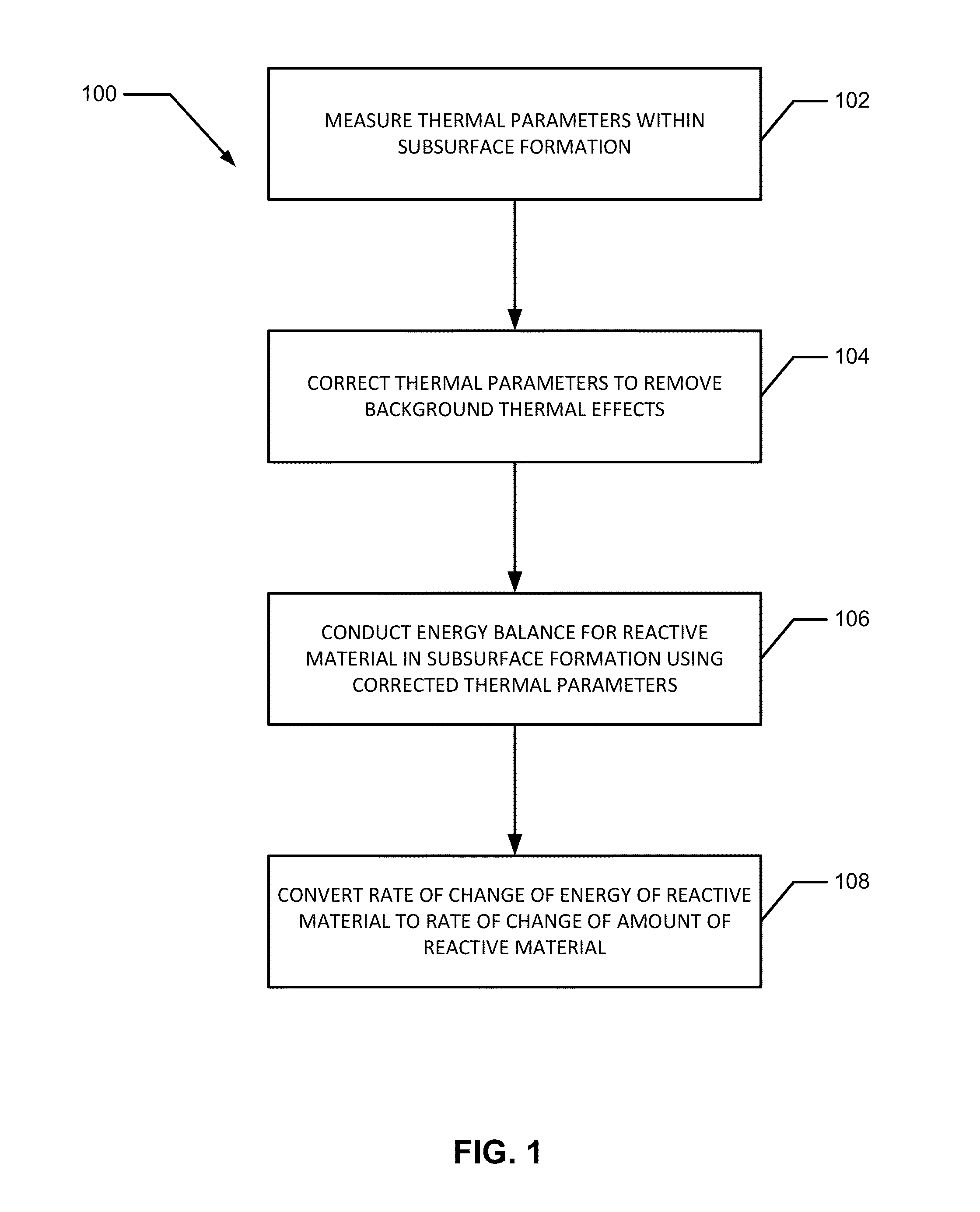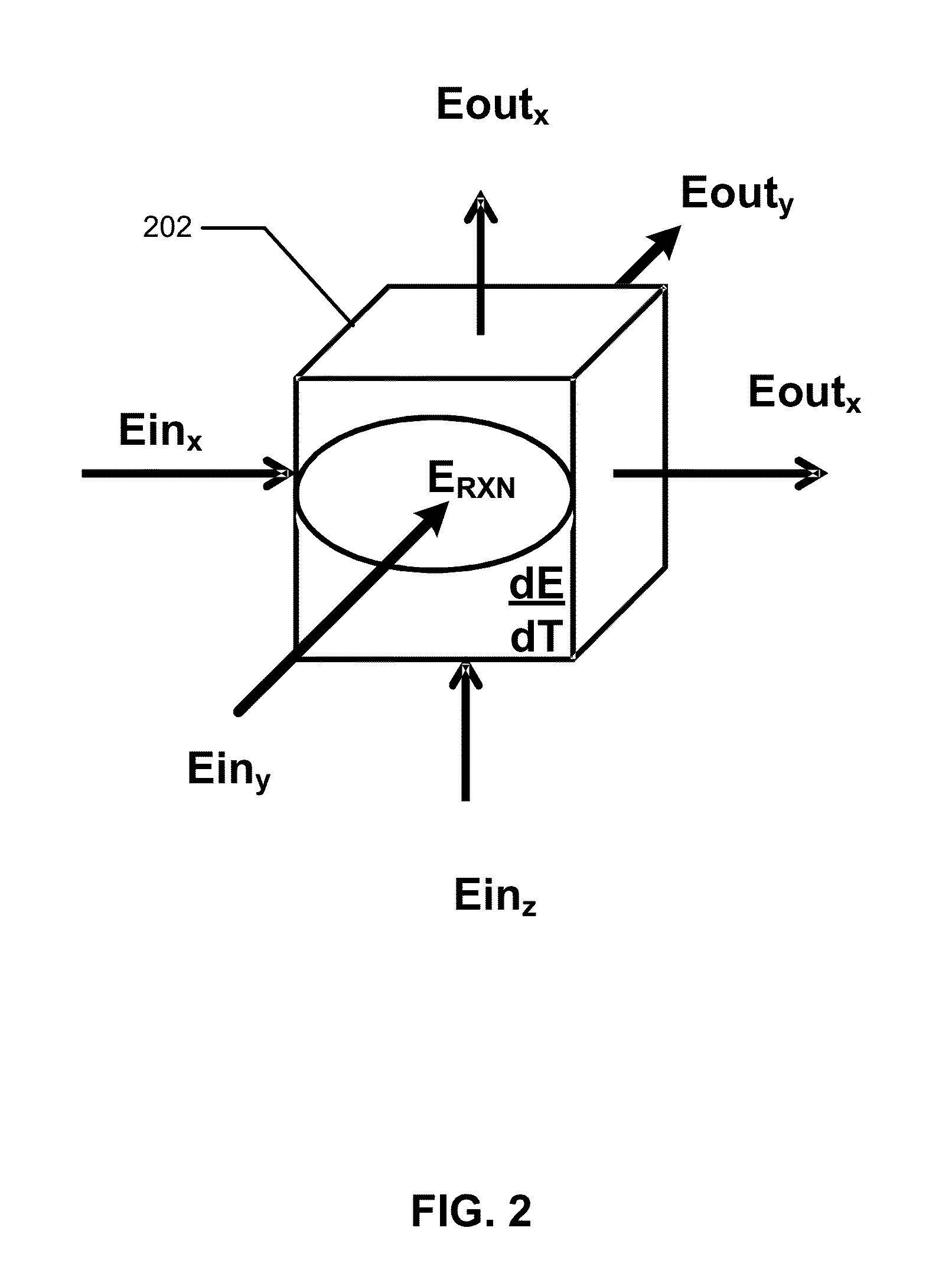Devices and methods for measuring thermal flux and estimating rate of change of reactive material within a subsurface formation
a technology of thermal flux and reactive material, which is applied in the direction of instruments, surveying, borehole/well accessories, etc., can solve the problems of difficult identification and cleanup of source zones, difficult locating regions within source zones that require treatment, and sparse distribution of reactive materials
- Summary
- Abstract
- Description
- Claims
- Application Information
AI Technical Summary
Benefits of technology
Problems solved by technology
Method used
Image
Examples
example 1
Monitoring of Rate of Change of LNAPL Reactive Materials Within a Subsurface Formation Using Subsurface Temperature Measurements /
[0078]To demonstrate the monitoring of the rate of change of a reactive material within a subsurface formation using the methods described herein above, the following experiments were conducted. Five 37-foot long PVC rods with eight attached thermocouples similar to the corresponding elements of the subsurface thermal monitoring system 300 illustrated in FIG. 4 were installed within a subsurface formation known to contain LNAPL regions at the locations N1, N2, N3, N4, and B1 as illustrated in FIG. 4. These subsurface assemblies of thermocouples, referred to as “sticks”, were located in an east-west transect across the northern edge of the site. The first three locations in the transect (N1-N3) were known to contain LNAPL regions. The southernmost location (B1) was considered to be a background location, where subsurface temperatures are not affected by LN...
PUM
 Login to View More
Login to View More Abstract
Description
Claims
Application Information
 Login to View More
Login to View More - R&D
- Intellectual Property
- Life Sciences
- Materials
- Tech Scout
- Unparalleled Data Quality
- Higher Quality Content
- 60% Fewer Hallucinations
Browse by: Latest US Patents, China's latest patents, Technical Efficacy Thesaurus, Application Domain, Technology Topic, Popular Technical Reports.
© 2025 PatSnap. All rights reserved.Legal|Privacy policy|Modern Slavery Act Transparency Statement|Sitemap|About US| Contact US: help@patsnap.com



